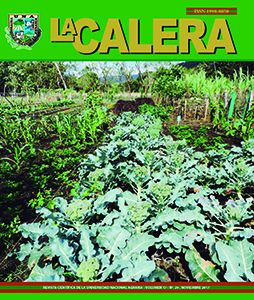Diversity and distribution of edaphic macrofauna in two management systems of Moringa oleifera (Lam.): Relationship with soil properties
DOI:
https://doi.org/10.5377/calera.v17i29.6528Keywords:
Edaphic macrofauna, Agroecological conversion, Functionality, Soil propertiesAbstract
With the aim to determine the relation between diversity and distribution of edaphic macrofauna and soil properties, a study was performed at National Agrarian University farm. International Program for Biology and Fertility of Tropical Soil sampling methodology was used. A taxonomical classification was done at phylum, class, order and family level as well functional groups such as detritivores, soil engineers, herbivores and predators. A higest density of macrofauna was registered on agroecological consersion system (7424 ind/m2) in comparision with conventional management system (1984 ind/m2), with major individual concentration (7488 ind/ m2) on the first 20 centimeters of the soil; and population density of 56.2% in 0 to 10 centimeters strata. The number of taxas show dominance of Insecta at both management systems. About family taxa, the edaphic macrofauna distrubution was diferent between systems with influence of the funtionality in each soil strata. The soil engenier group was the dominan on agroecological consersion system; while detritivorous group was dominan in conventional system. Was determinate the infl uence of hábitat over physic and chemical soil properties, and the biological populations; founding efecto of management over the density, diversity and distribution of the edaphic macrofauna.
Downloads
1403

